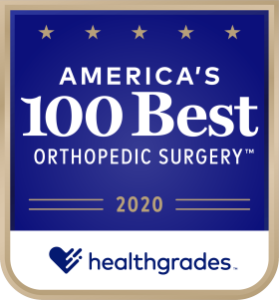 Arthritis is a condition which describes inflammation in the joints. Arthritis is often associated with feelings of pain, swelling, and stiffness. While arthritis can occur in any joint in the body, most often, arthritis will occur in the knee.
Arthritis is a condition which describes inflammation in the joints. Arthritis is often associated with feelings of pain, swelling, and stiffness. While arthritis can occur in any joint in the body, most often, arthritis will occur in the knee.
Why Does Arthritis Occur in the Knee?
Arthritis is most common in the knee because of its unique structure and role in the body. The knee is the largest and strongest joint in the body and is comprised of the bottom of the femur (thighbone), the top of the tibia (shinbone), and the patella (kneecap). At the intersection of these three bones is cartilage, a lubricated substance that surrounds the bones, protecting and cushioning them as you bend and straighten your knee. Unfortunately, over time, this cartilage deteriorates, especially with heavy use or strain. As the cartilage degrades, arthritis will advance in the individual’s joint.
What Does Arthritis Feel Like: Main Symptoms
As arthritis progresses, an individual will likely experience pain and inflammation in their knee. In addition to pain and swelling, one may also experience:
- The knee is difficult to bend and straighten as it is stiff and swollen.
- Pain and stiffness after times of rest, such as after waking up in the morning or standing after sitting for some time.
- Heightened pain after intense physical activity.
- Creaking, cracking, or popping sounds from the knee.
- Knee pain that changes with the weather.
- Feelings of weakness or buckling while standing.
Common Treatments for Arthritis
While there is unfortunately no cure for arthritis, there are many common treatments and interventions to alleviate arthritis pain. There are many nonsurgical changes a person can make to their lifestyle to reduce the progression of arthritis. Generally, these include minimizing aggravating activities, like climbing many stairs or running, switching to light exercises, losing weight, and pursuing physical therapy. Assistive devices such as canes or a knee brace may also be helpful in reducing knee pressure. For pain management, over-the-counter medications, or nonsteroidal anti-inflammatory drugs (NSAIDs) are often recommended.
In particularly severe cases of arthritis, in which pain is debilitating and not relieved with nonsurgical treatments, your doctor may recommend surgical interventions. There are multiple options for surgical treatment, which include:
- Cartilage grafting – an intervention which transfers healthy cartilage tissue from another part of the body to replace damaged cartilage in the knee.
- Synovectomy – removal of joint lining that is damaged by arthritis
- Osteotomy – the surgical shortening of either the tibia (shinbone) or femur (thighbone) to relieve pressure on the knee joint.
- Total knee replacement – complete removal of the damaged cartilage and bone, which is replaced with a metal or plastic joint.
Great Lakes Orthopaedics
If you’re seeking treatment for arthritis, you can find support with Great Lakes Orthopaedics. Reach out today to learn more about our highly specialized orthopaedic treatments and get back to living your best active life.
Medical Disclaimer
The information in this article is provided for general information only. It is not intended as medical advice and should not be relied upon as a substitute for professional consultation with a healthcare provider familiar with your medical background and history.




